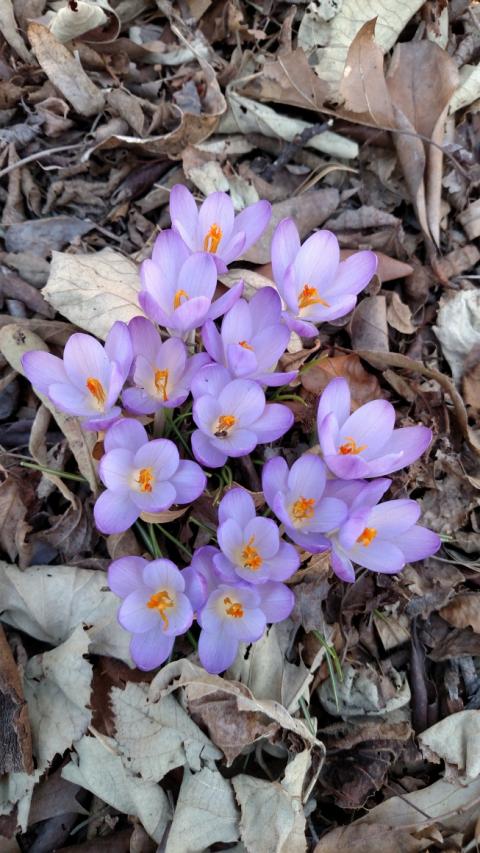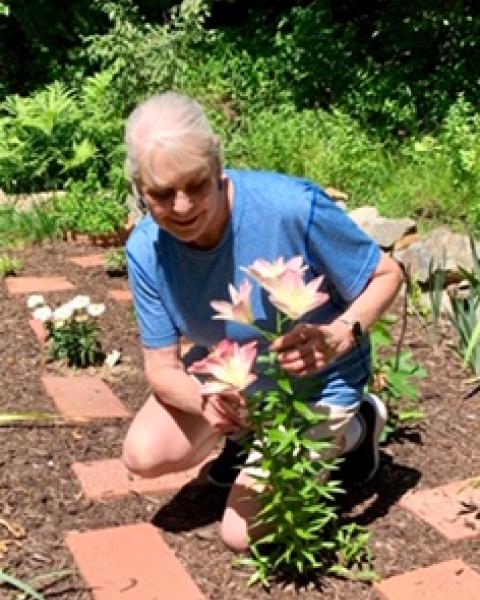Early Risers

During a recent January thaw, the snow melt revealed my ground-hugging primroses. One more day of mid-50s temperatures and those bursting yellow buds likely would have opened well-ahead of their typical March appearance.
Primula means “first” or “early” in Latin. There are 490 to 600 species of these flowers growing in Northern climates, from marshes to bogs to mountainous areas. In the wild these perennials thrive in partial shade, well-drained soil and along forest edges. Stalks rise 4 to 12 inches from the center of tongue-shaped leaves. Primroses come in white, purple, pink or yellow colors. Primrose’s green leaves are edible in salads or when dried to make tea. The plant has been used as a medicinal product since the Middle Ages, and touted by some as herbal medicines to treat insomnia, restlessness, headaches and cough.
Primroses aren’t the only early risers in cold temperatures. Pussy willows, dwarf irises and winter aconite are just some of the 20 or so plants that bloom in the cold and put a happy face on cold-weary New Englanders. Joann Vieira, Director of Horticulture at Tower Hill Botanic Garden in Boylston, Mass., walks in rural areas searching for liverleaf (Anemone americana), a small, 4-inch tall flower from the buttercup family that blooms early April to May. Named for its three-lobed leaves resembling the shape of a human liver, it’s usually found on south-facing slopes, she says. “We’re desperate, especially in spring, to see something blooming and everything that comes up is a favorite.”
If she had to name a plant that delights her, she would pick hybrid witch hazel, “because they have an extended season from January through April, depending on the weather.” Not to be confused with native witch hazel (Hamamelis virginiana), which blooms in the fall, hybrid witch hazel (Hamamelis x intermedia) is a cross between two Asian species, she says. “The blooms are yellow, orange and red, and they are a terrific source of food for honey bees. The bees love them.”
Tower Hill is open year-round and has two conservatories overlooking the winter landscape. Joann, who has worked at the garden 30 years, names white forsythia (Abeliophyllum distichum), as another early flowering plant she likes. It belongs to the same botanical family as yellow forsythia, and there are similarities such as multi-stemmed branching and budding flowers on leafless branches. Native to the Korean Peninsula, it blooms much earlier than its yellow flowered relative.
Other early flowers she mentions in the Tower Hill landscape are crocuses — “there are lots of them” — and snowdrops (Galanthus) that “normally come up late winter to early spring.” These small, white perennials — of which there are about 20 species — push up through the snow before spring arrives, and are found in cultivated gardens and in the wild.
“My favorite first flower of season is the crocus, which is the same genus that saffron is derived,” says Jamie Colen, Garden Director at the Fuller Gardens in North Hampton, N.H. “It’s an indicator plant, that is, when it begins its bloom cycle the ground is usually warm enough to start working the soil and remove winter protection from tender plants.” Director for 19 years, and working at Fuller 25 years, he says the nearly three-acre garden has hundreds of all types, but he likes “the ubiquitous purple one with the yellow throat.” He says it’s “amazing” to see groups of plants, such as snowdrop and crocus, coming up through the snow. “It embodies New England’s tough spirit.”
His second favorite flower is Indian pipe, also called ghost pipe, among other names. “Years ago it was misidentified as a fungus.” It grows May through October, in moist shady areas, and is considered rare. Monotropa uniflora comes up as a bunch of stalks, from 6 to 10 inches tall, and lacks chlorophyll. At the tip of each stalk is a small white or light pink flower with four or five petals.
Fuller Gardens, a formal garden known for its 1700 rose bushes in 125 varieties, is open daily from mid-May through mid-October. Jamie mentions he likes the early emerging “Helleborus growing in the shade of hosta border.” He estimates the many hellebore varieties at the Fuller have been there around 50 to 60 years.
Although they don’t incorporate dandelions in plantings, Jamie says “there are always some around.” Jamie thinks the mid-spring blooming dandelion is “awesome, in the sense that despite our desire to eradicate this humble flower, it continues multiplying.” What most people consider a weed, he says, is simply an unwanted wild plant. “If dandelions were hard to grow everyone would want to grow them,” he says. “You can eat them, make wine out of their flowers and their roots can be used for all sorts of medicinal purposes. I say, let them live!”
UNH Cooperative Extension Master Gardener volunteers share information about home, yard, and garden topics with the people of New Hampshire. Got questions? Master Gardeners provide practical help finding answers to your questions through the Ask UNH Extension Infoline. Call toll free at 1-877-398-4769, Monday to Friday, 9 a.m. to 2 p.m., or e-mail us atanswers@unh.edu.

